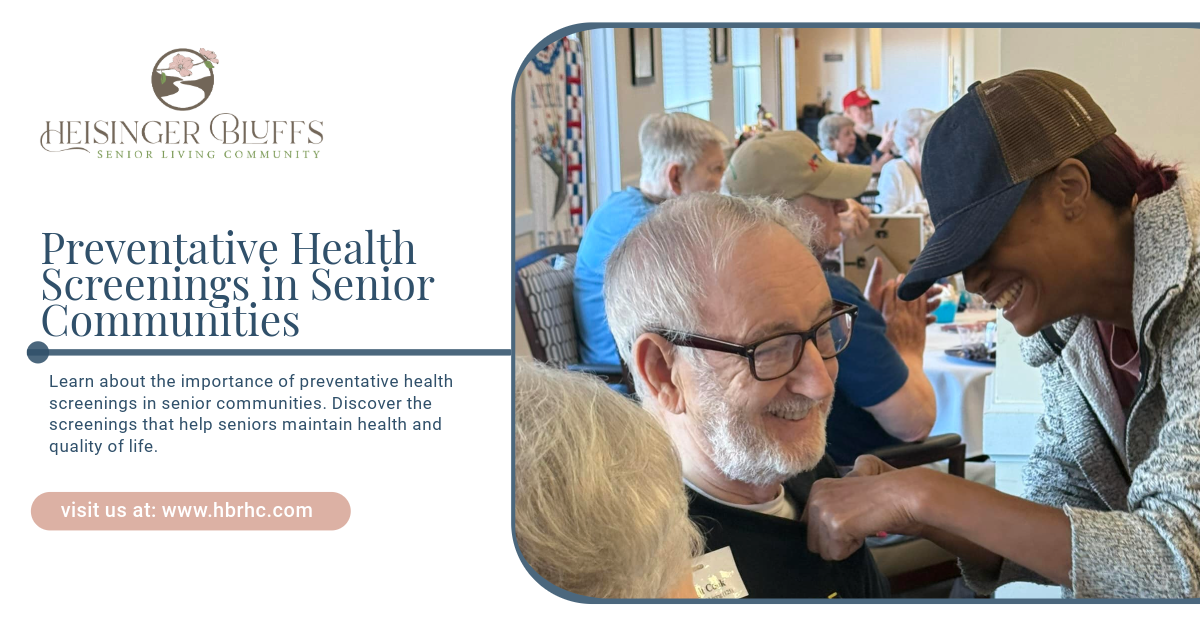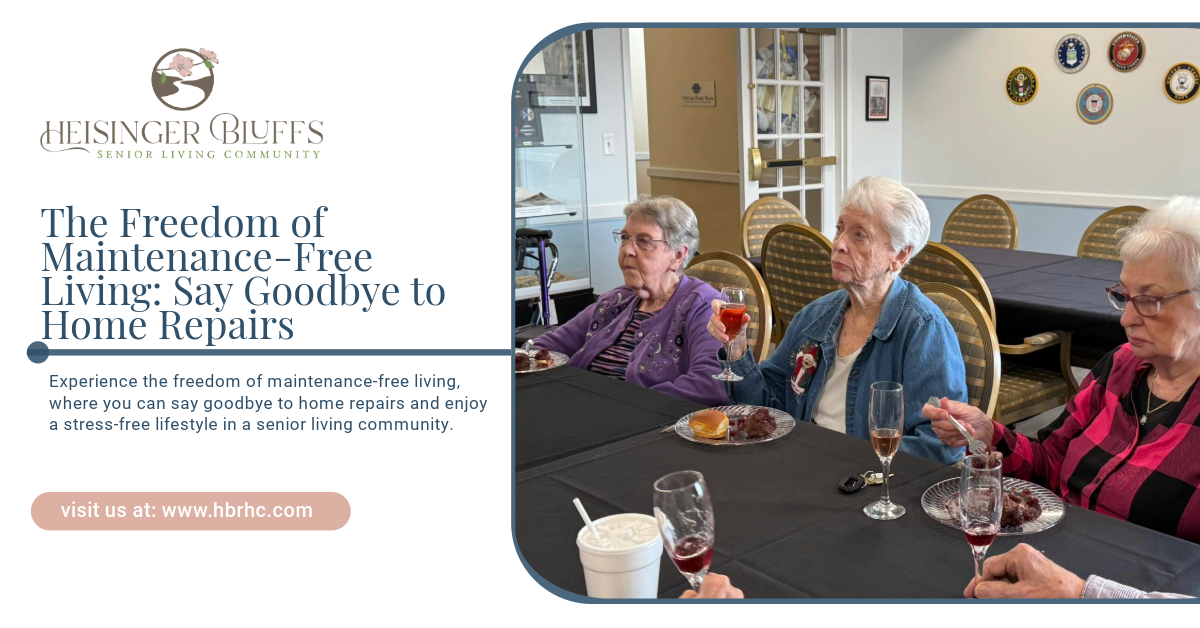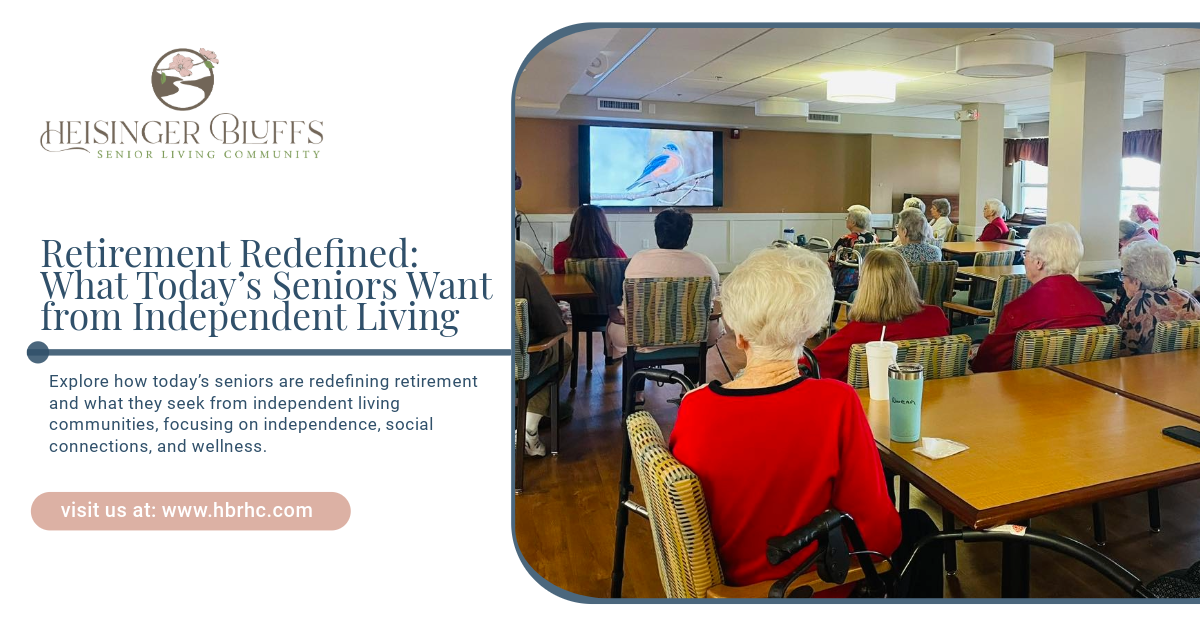The Benefits of Receiving Rehab in a Senior Living Community

Rehab in a Senior Living Community: Benefits
As we age, rehabilitation often becomes an essential part of maintaining health and improving quality of life. Whether recovering from surgery, injury, or managing a chronic condition, rehab is crucial for promoting independence and helping seniors regain their strength. For many older adults, receiving rehab in a senior living community can provide additional advantages over traditional rehabilitation settings. Senior living communities offer a holistic environment that integrates rehabilitation services with other essential aspects of senior care, creating a supportive atmosphere for recovery.
In this blog post, we’ll explore the numerous benefits of receiving rehab in a senior living community. From personalized care plans to comprehensive support systems, senior living communities are well-equipped to help seniors achieve their rehabilitation goals.
Comprehensive and Tailored Rehab Services
One of the most significant benefits of rehab in a senior living community is the comprehensive and personalized care it offers. Each resident’s rehabilitation plan is tailored to meet their individual needs, ensuring that recovery goals are realistic and achievable.
1. Specialized Therapies
Senior living communities typically provide access to a variety of rehabilitation services, including physical therapy, occupational therapy, and speech therapy. These therapies are crucial for seniors recovering from surgery, managing chronic conditions, or improving mobility. The rehab programs are designed with seniors in mind, taking into account factors like mobility limitations, cognitive abilities, and overall health.
2. Personalized Care Plans
Rehabilitation programs in senior living communities are not one-size-fits-all. Each senior receives a personalized care plan designed by a team of healthcare professionals. The plan takes into consideration the senior’s medical history, specific needs, and personal goals. This individualized approach increases the likelihood of successful rehabilitation and can help seniors achieve more positive outcomes.
3. Ongoing Assessment
Rehabilitation in a senior living community typically includes ongoing assessments to monitor progress. These assessments ensure that the rehab plan remains effective and is adjusted as needed. For seniors with complex health conditions or those recovering from major surgeries, continuous monitoring allows for quick adjustments to the rehabilitation program to ensure the best possible results.
Access to Professional Healthcare Providers
Rehabilitation in a senior living community is typically overseen by a team of professional healthcare providers. This multidisciplinary team often includes:
- Physical therapists who help seniors recover strength, balance, and mobility.
- Occupational therapists who assist with regaining the ability to perform daily activities, such as dressing, cooking, and bathing.
- Speech-language pathologists who support seniors with speech and swallowing difficulties.
- Nurses and doctors who provide ongoing medical supervision and ensure that residents are recovering safely and without complications.
The presence of these professionals in a senior living community ensures that seniors receive comprehensive, round-the-clock care that addresses not only their rehab needs but also their overall health. The ability to work with a coordinated team of experts can significantly enhance the recovery process and reduce the risk of complications.
A Supportive and Safe Environment
Rehabilitation can be a physically demanding process, especially for seniors who may experience challenges with mobility, balance, or stamina. Senior living communities provide a supportive and safe environment that can ease the recovery process.
1. Safe Living Spaces
Senior living communities are specifically designed with seniors in mind, offering spaces that are optimized for safety and ease of movement. Whether it’s wide hallways for wheelchair access or grab bars in bathrooms, the environment is built to help seniors navigate safely as they undergo rehab. This is especially important for seniors recovering from surgeries or injuries, as it minimizes the risk of additional accidents or falls.
2. Assistance with Activities of Daily Living
As seniors work on their rehabilitation goals, they often need help with activities of daily living (ADLs), such as dressing, bathing, eating, or using the restroom. In a senior living community, caregivers are available to assist with these activities, ensuring that seniors remain safe and comfortable throughout their recovery.
3. Emotional Support
Rehabilitation can be mentally and emotionally challenging, especially if the senior is adjusting to changes in their physical abilities. The supportive community atmosphere found in senior living facilities provides emotional support, helping seniors maintain a positive outlook on their recovery. Additionally, social interactions with peers can help combat feelings of loneliness and isolation, which can be particularly important during rehabilitation.
Integration of Socialization and Recreation
While rehab is important, so is maintaining a sense of normalcy and enjoyment in life. In a senior living community, residents have the opportunity to engage in social activities and recreational programs, which can significantly enhance their overall well-being during recovery.
1. Socialization Opportunities
Socializing with other residents can help seniors feel more engaged and motivated in their rehab journey. Many senior living communities offer group activities, such as art classes, exercise programs, and movie nights, which provide both social interaction and a sense of purpose. The encouragement and companionship from fellow residents can help keep spirits high and make the rehab process feel less isolating.
2. Recreational Programs
Recreational activities in senior living communities also play an important role in rehab. For example, aquatic therapy is a common form of rehabilitation that takes place in the community’s swimming pool. Water therapy is often gentle on the joints, making it ideal for seniors recovering from surgery or dealing with arthritis. Additionally, programs like light yoga, walking clubs, and even gardening can aid in rehabilitation by improving mobility, strength, and flexibility.
Convenience and Continuity of Care
Rehabilitation often requires ongoing medical treatments and follow-up appointments. One of the major benefits of receiving rehab in a senior living community is the convenience of having all these services available in one location.
1. On-Site Services
Many senior living communities offer on-site medical services, including therapy sessions, wellness check-ups, and other health-related appointments. This means that seniors can receive continuous care without having to travel between multiple locations, making it easier to stick to their rehabilitation schedule. Additionally, the continuity of care provided by the same team of professionals can improve outcomes, as they are familiar with the senior’s history and progress.
2. Reduced Stress for Family Members
Having rehab services within a senior living community can also reduce the stress on family members. Family members often struggle to balance caregiving with other responsibilities, and having a rehabilitation program in place means they don’t have to worry about coordinating appointments or managing transportation. They can feel confident that their loved one is receiving the best care possible.
Promoting Long-Term Wellness and Independence
Rehabilitation in a senior living community doesn’t just focus on short-term recovery; it also helps promote long-term wellness and independence. By offering a comprehensive approach that includes therapy, medical care, social engagement, and recreation, senior living communities provide a holistic environment that supports the overall well-being of residents.
1. Encouraging Independence
The goal of rehabilitation is to help seniors regain as much independence as possible. Senior living communities focus on helping seniors perform daily activities on their own, while still offering assistance when necessary. This encourages confidence and a sense of self-worth as seniors work towards regaining their strength and abilities.
2. Preventing Future Health Issues
By offering rehabilitation services within a senior living community, seniors can address underlying health issues that may contribute to future problems. Physical therapy, for example, can help seniors improve balance and coordination, which can reduce the risk of falls. Occupational therapy can teach seniors strategies for performing daily tasks more effectively, which can improve their quality of life and minimize the need for additional care in the future.
Conclusion
Rehabilitation is a crucial part of the recovery process for many seniors, and receiving rehab in a senior living community can provide numerous benefits. From comprehensive care plans and professional healthcare teams to a safe, supportive environment, senior living communities are uniquely equipped to support seniors through the rehabilitation process. The combination of medical care, social interaction, and recreational opportunities can make rehabilitation not only more effective but also more enjoyable.
At Heisinger Bluffs, we understand the importance of providing seniors with a holistic environment that supports both physical recovery and emotional well-being. Our community is designed to provide personalized rehab services, ensuring that each resident receives the care they need to recover and thrive.
Frequently Asked Questions
What types of rehab services are available in senior living communities?
Senior living communities typically offer a variety of rehab services, including physical therapy, occupational therapy, speech therapy, and sometimes specialized programs like aquatic therapy. These services are tailored to meet the unique needs of each resident.
How can rehab in a senior living community help with long-term wellness?
Rehab in a senior living community helps promote long-term wellness by focusing on improving strength, mobility, and daily living skills. Ongoing therapy can prevent future health issues, reduce the risk of falls, and help seniors maintain their independence.
Can family members be involved in the rehab process?
Yes, family members are encouraged to be involved in the rehabilitation process. They can participate in care planning meetings, monitor progress, and provide emotional support to the senior during their recovery. Many communities also offer family education to help caregivers understand how to support their loved one’s rehab journey.
Sources:
- https://www.verywellhealth.com/geriatric-physical-therapy-5189469
- https://pmc.ncbi.nlm.nih.gov/articles/PMC6486144/
- https://www.usa.edu/blog/types-of-rehabilitation/
- https://www.agespace.org/coronavirus/winter-activities
- https://www.ncoa.org/article/how-physical-therapy-and-senior-center-partnerships-can-improve-lives/











